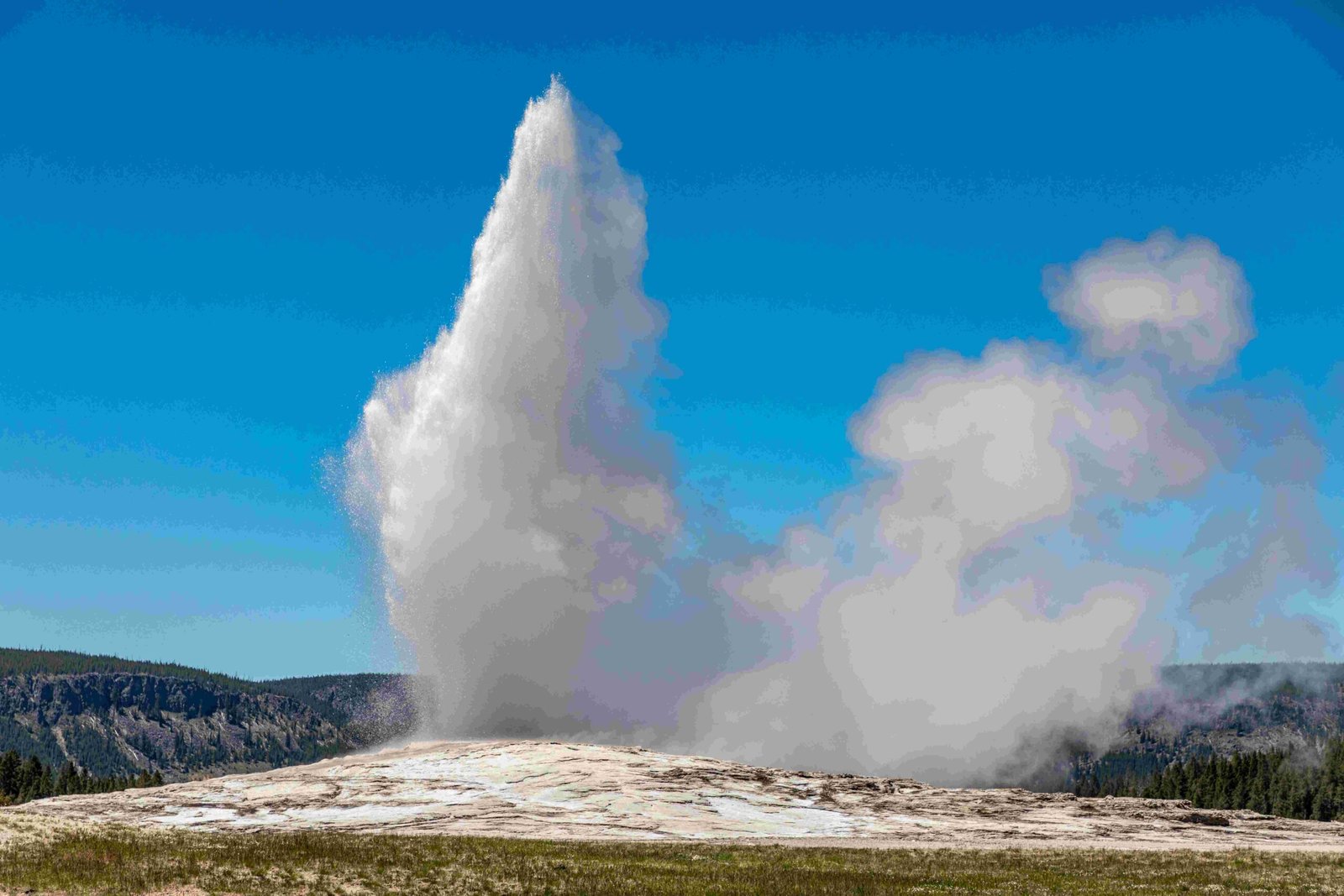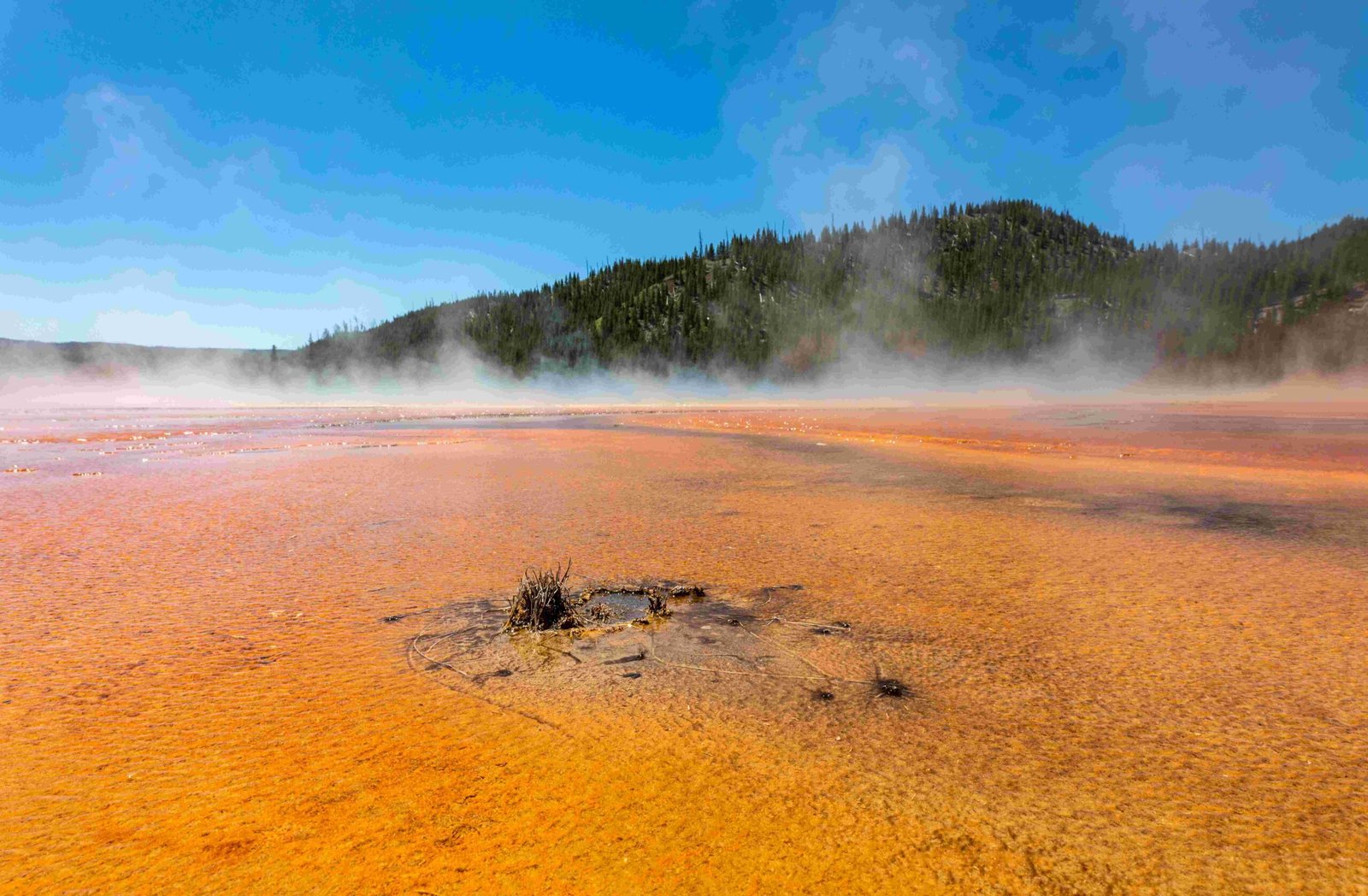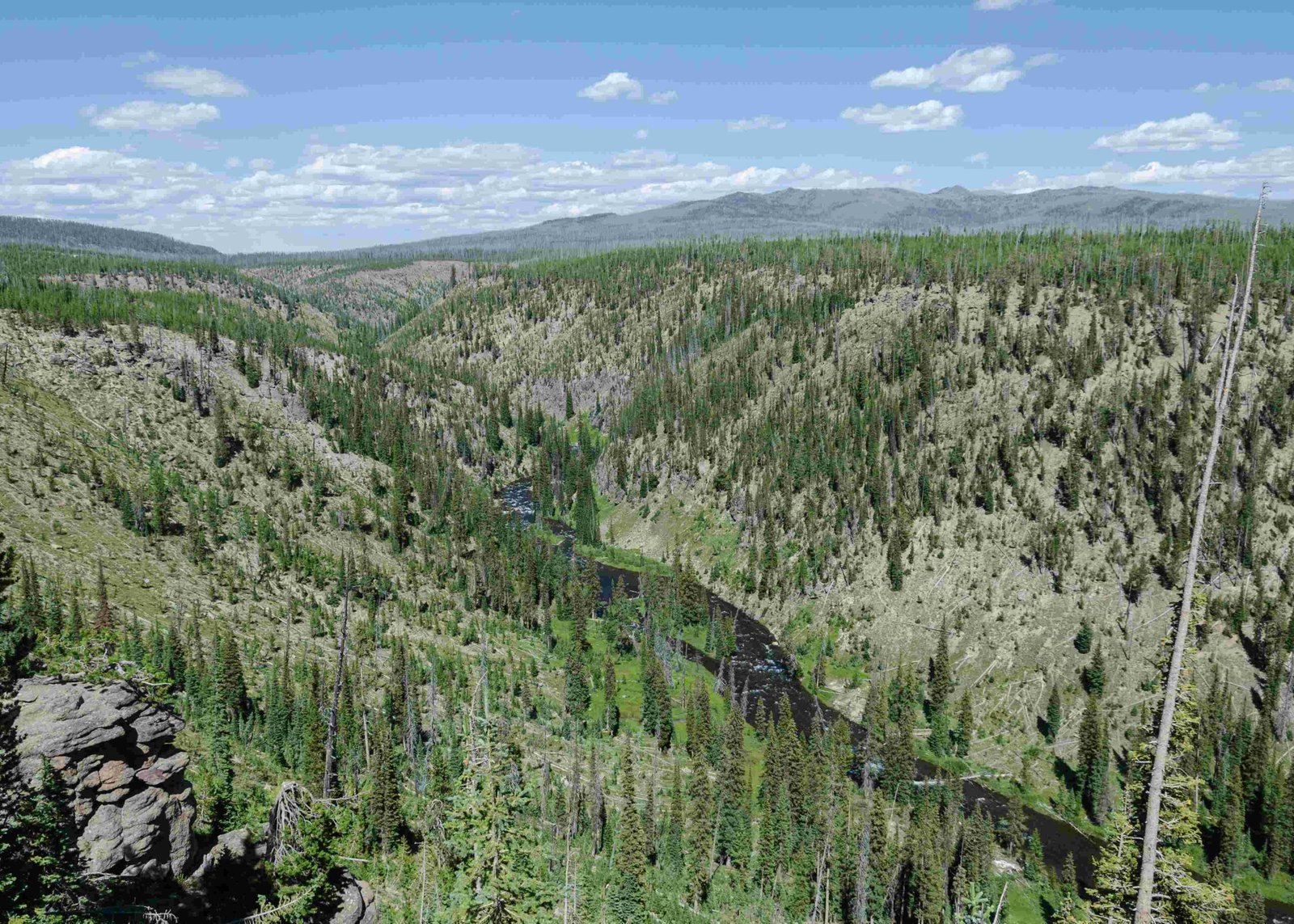Yellowstone National Park does indeed sit on a volcano, specifically a supervolcano known as the Yellowstone Caldera. This massive volcanic system has shaped the park’s landscape and continues to fuel its famous geothermal features. The Yellowstone Caldera, measuring approximately 43 by 28 miles, was formed by three major supereruptions over the past 2.1 million years. Today, the park’s geysers, hot springs, and fumaroles serve as reminders of the powerful forces lurking beneath the surface.
What is the Yellowstone Caldera?

The Yellowstone Caldera is a volcanic feature that underlies much of Yellowstone National Park. It’s often referred to as a supervolcano due to its potential for extremely large eruptions. Here are some key facts about the Yellowstone Caldera:
- Size: Approximately 43 by 28 miles (70 by 45 kilometers)
- Age: Formed by three major eruptions over the past 2.1 million years
- Type: Caldera (a large volcanic crater formed by collapse after an eruption)
- Current status: Active, but not currently erupting
The caldera’s formation is linked to the movement of the North American plate over a stationary hotspot, which has left a trail of volcanic activity across Idaho’s Snake River Plain and under Yellowstone.
How Was the Yellowstone Caldera Formed?

The formation of the Yellowstone Caldera is a fascinating geological story that spans millions of years. Here’s a breakdown of the major events:
- 2.1 million years ago: Huckleberry Ridge eruption
- 1.3 million years ago: Mesa Falls eruption
- 640,000 years ago: Lava Creek eruption
Each of these eruptions involved massive volumes of rhyolitic magma accumulating at shallow levels, leading to violent explosions and subsequent ground collapse, forming calderas.
What Are the Current Signs of Volcanic Activity in Yellowstone?
While Yellowstone isn’t currently experiencing a major eruption, there are numerous signs of ongoing volcanic activity:
- Over 10,000 geothermal features, including more than 300 active geysers
- Regular earthquakes (mostly small)
- Ground deformation due to magma movement
- Continuous gas emissions from fumaroles
These features are closely monitored by scientists to track any changes that might indicate increased volcanic activity.
How Do Yellowstone’s Geysers Work?
Yellowstone’s geysers are one of the most visible signs of the park’s volcanic nature. Here’s a simple explanation of how they function:
- Water seeps into the ground and is heated by magma
- Pressure builds up as the water turns to steam
- When pressure overcomes the weight of the water above, an eruption occurs
- The process repeats as the system refills with water
Old Faithful, one of the park’s most famous geysers, erupts approximately every 90 minutes, showcasing this process for visitors.
What Are the Potential Hazards of Yellowstone’s Volcano?
While the chances of a catastrophic eruption are low, Yellowstone’s volcano does pose some potential hazards:
| Hazard Type | Description | Likelihood |
|---|---|---|
| Supereruption | Massive eruption with global impacts | Very low |
| Lava flows | Localized eruptions of lava | Low |
| Hydrothermal explosions | Steam-driven explosions | Moderate |
| Earthquakes | Seismic activity related to magma movement | High (mostly small) |
It’s important to note that while these hazards exist, the park is constantly monitored, and visitor safety is a top priority.
How Is Yellowstone’s Volcanic Activity Monitored?
The United States Geological Survey (USGS) and Yellowstone National Park authorities use a variety of methods to monitor volcanic activity:
- Seismographs to detect earthquakes
- GPS measurements to track ground deformation
- Regular surveys of thermal areas
- Chemical analysis of gases and water from geothermal features
This comprehensive monitoring system helps scientists understand the volcano’s behavior and provides early warnings of any significant changes.
What Would Happen If Yellowstone’s Volcano Erupted?
While a supereruption is extremely unlikely in the near future, it’s natural to wonder about the potential impacts. A major eruption could have far-reaching effects:
- Widespread ash fall across much of North America
- Disruption of global climate patterns
- Destruction of infrastructure in the surrounding areas
- Potential food shortages due to crop failures
However, it’s crucial to remember that such an event is rare and not expected in the foreseeable future.
How Can Visitors Safely Experience Yellowstone’s Volcanic Features?
Yellowstone National Park offers numerous opportunities for visitors to safely experience its volcanic and geothermal wonders:
- Stay on designated boardwalks and trails
- Observe posted warning signs
- Attend ranger-led programs to learn about the park’s geology
- Visit the park’s visitor centers for educational exhibits
- Take guided tours focused on the park’s geothermal features
By following park guidelines, visitors can safely enjoy the unique volcanic landscape of Yellowstone.
In conclusion, Yellowstone National Park does indeed sit on a volcano, and this geological feature is central to the park’s unique character. From its dramatic past eruptions to its current geothermal activity, the Yellowstone Caldera continues to shape one of America’s most beloved national parks.
References:
1. Geologic History of Yellowstone
2. Yellowstone Caldera – Wikipedia
3. Yellowstone Caldera – Yellowstone Geology
4. Yellowstone Volcano Observatory
5. Yellowstone National Park – Geothermal Features

